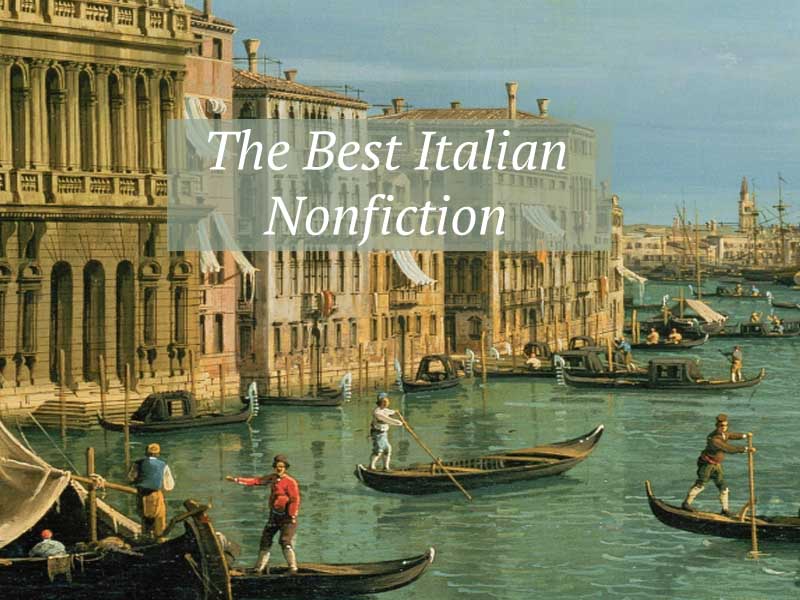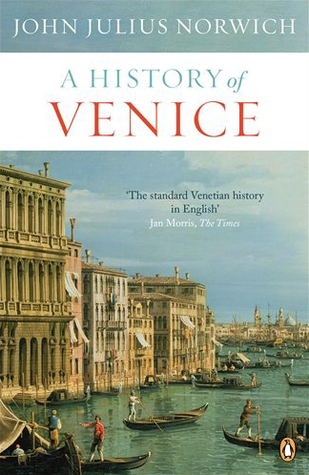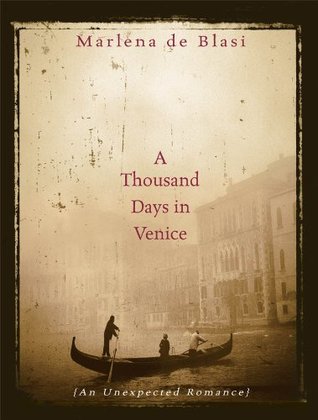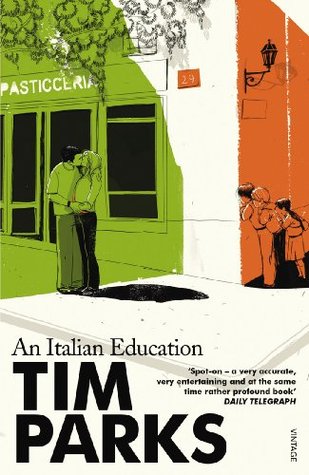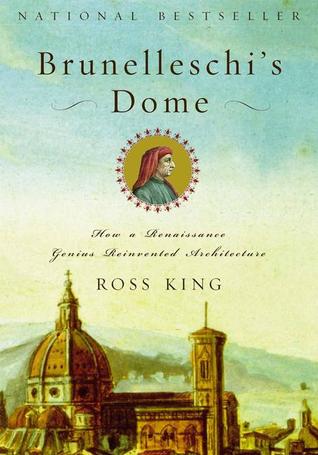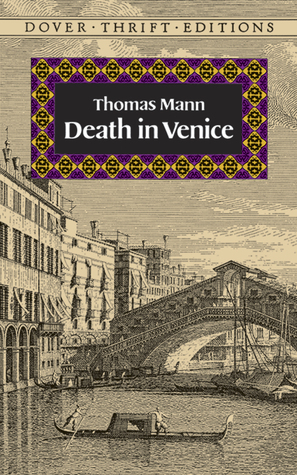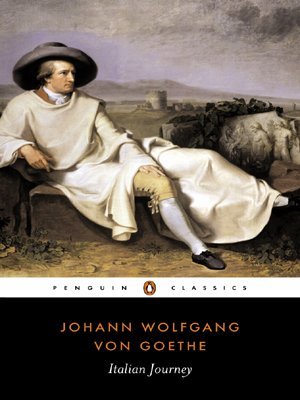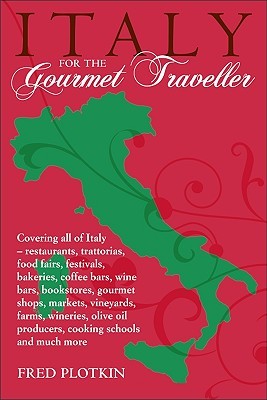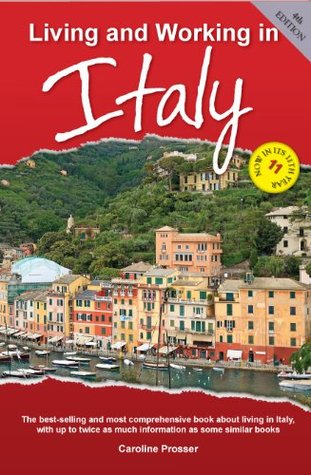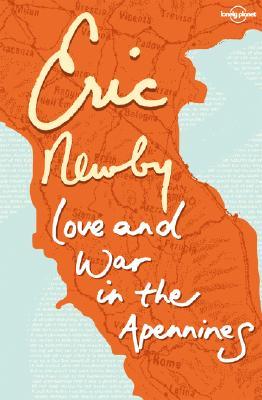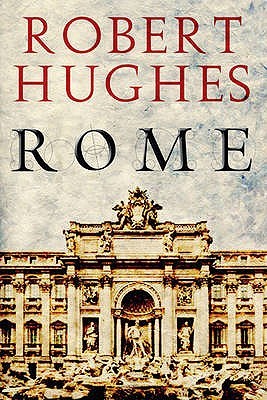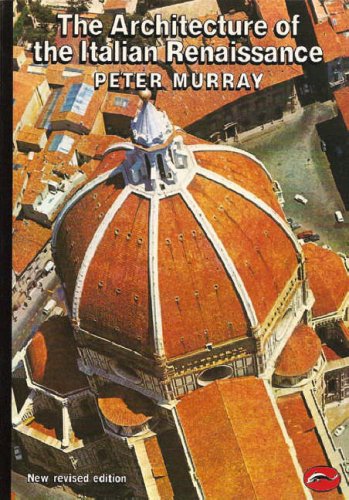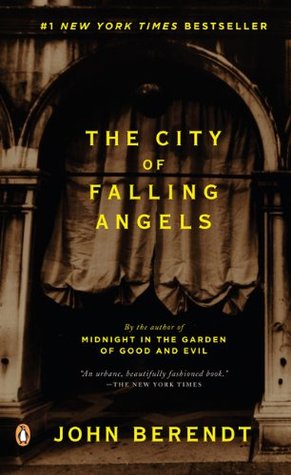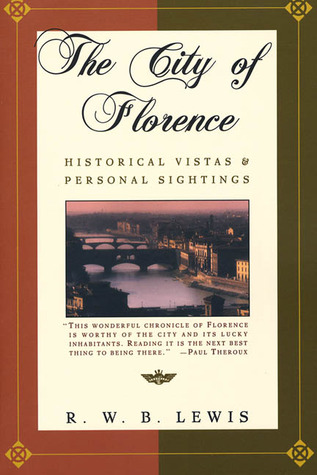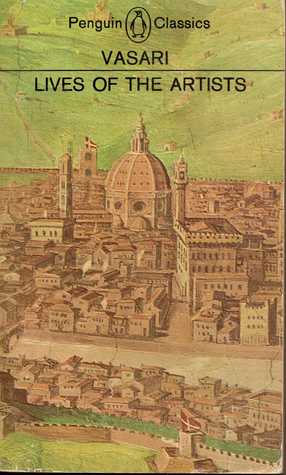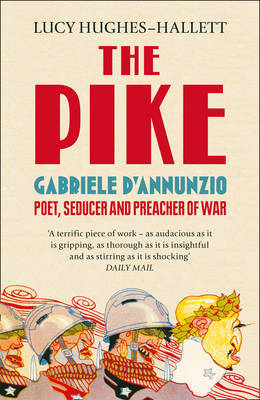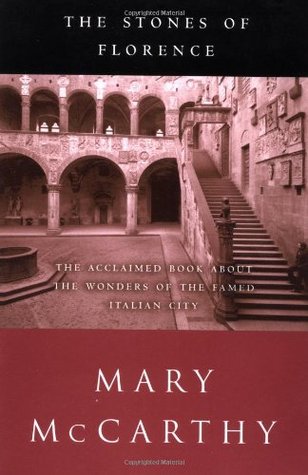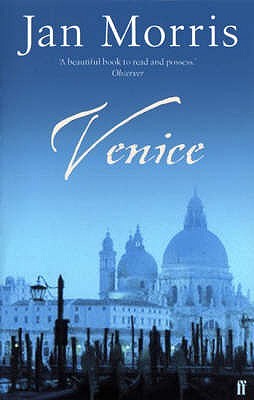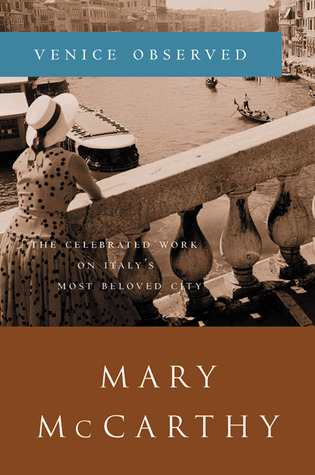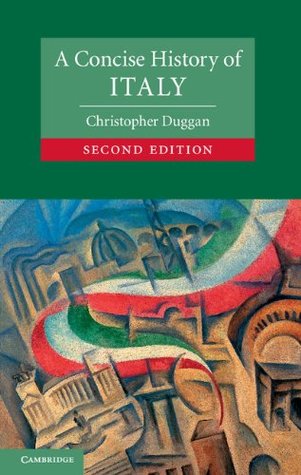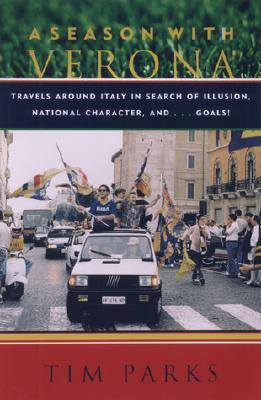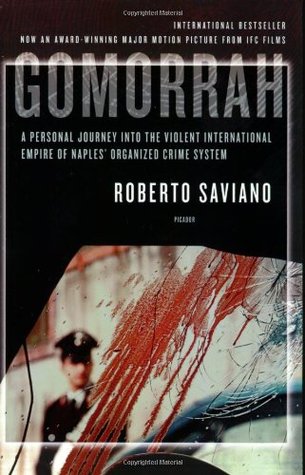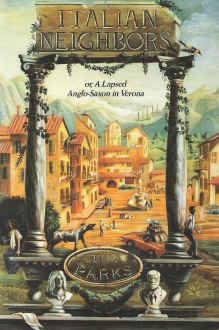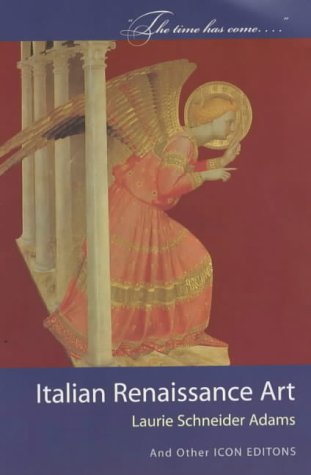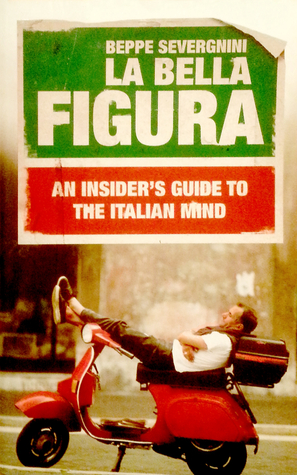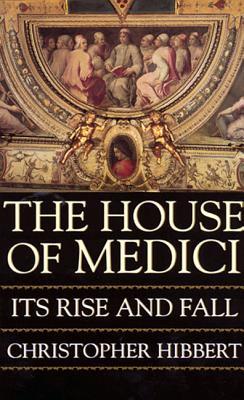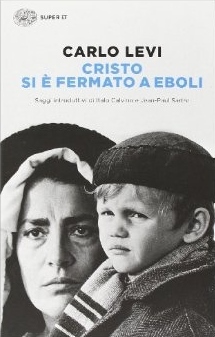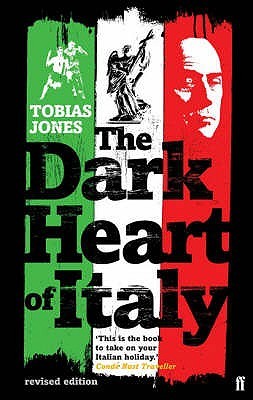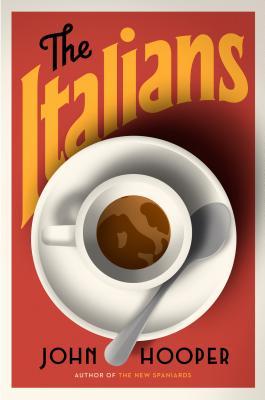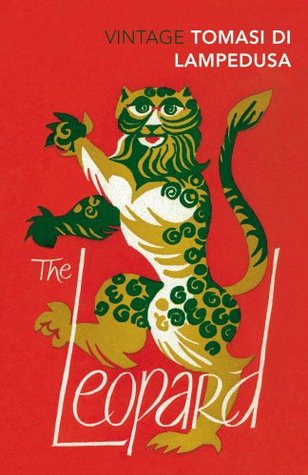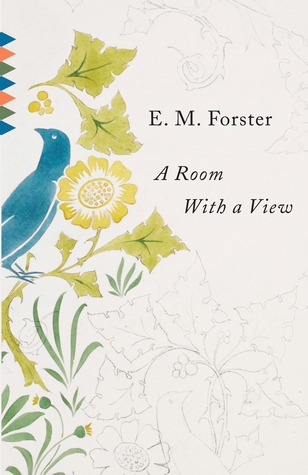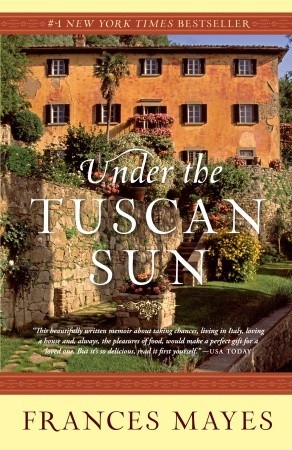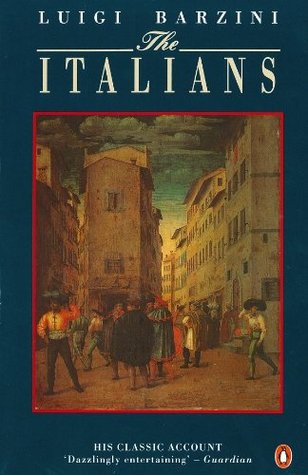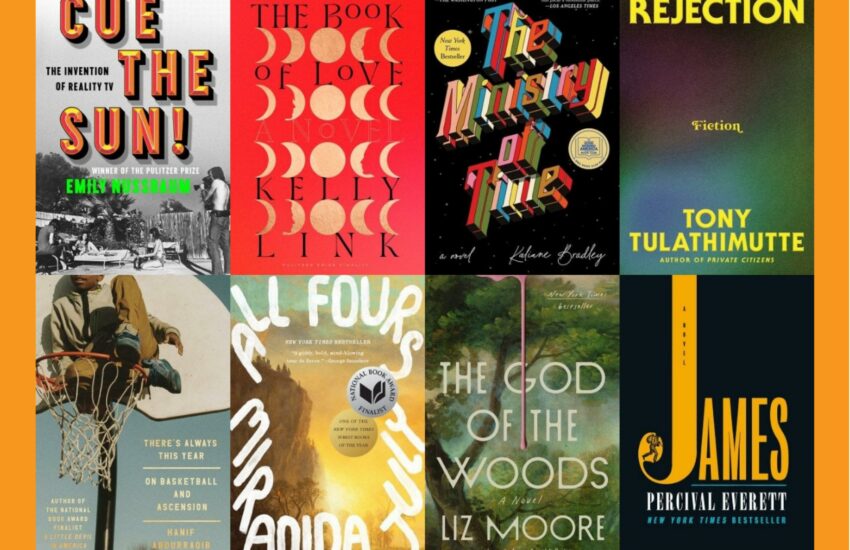The Best Italian Nonfiction Books
“What are the best Italian Nonfiction books?” We looked at 295 different titles, aggregating and ranking the entries in an attempt to answer that very question!
Part 2 of our Italy week is Nonfictioooooooon. A quick caveat right up front, the lists we used to aggregate and make our list contained a few non-nonfiction titles, which we decided to keep on the list rather than edit out. You will find at least one in the top 10, so keep an eye out.
As a reminder, the Italy lists we made for this week include:
Below you can find the top 36 books, all appearing on 2 or more lists, with images, summaries, and links. The remaining 250+ books, as well as the articles we used are at the bottom of the page.
Happy Scrolling!
The Top Nonfiction Books About Italy
36 .) A History of Venice by John Julius Norwich
Lists It Appears On:
- Bear Cave
- Rick Steves
As comprehensive as it is engaging, John Julius Norwich’s A History of Venice is a complete history of “the most beautiful and magical of cities.” This necessary volume traces the rise of Venice from its fifth-century origins through 1797 when Napoleon put an end to the thousand-year-old Republic.
35 .) A Small Place in Italy by Eric Newby
Lists It Appears On:
- Rick Steves 2
- Rick Steves
Since first setting eyes on Italy at the age of 22 through the periscope of a submarine, Eric Newby has come to feel it is the country he knows and understands best. In 1967, he and his wife bought “Il Castagni”, otherwise “The Chestnuts”, a small and ruinous farmhouse in the foothills of the Apuan Alps on the borders of Liguria and northern Tuscany. They were the first foreigners to live in this particular area, and the only ones. The house came complete with, among other indigenous wildlife, a large colony of cockroaches, a band of predatory mice the size of small cats and, unknown to them when they bought the house, a sitting tenant, Attilio, an extremely eccentric and ancient man who had once built an aeroplane and crashed it. In this book, Eric Newby describes how he and his wife pulled the house back from collapse and tells of their friendship with the neighbouring “contadini”, country people, which endured for 25 years, and a way of life now changed almost beyond recognition.
34 .) A Thousand Days in Venice by Marlena de Blasi
Lists It Appears On:
- Bear Cave
- Italylogue
“Fernando first sees Marlena across the Piazza San Marco and falls in love from afar. When he sees her again in a Venice café a year later, he knows it is fate. He knows little English; she, a divorced American chef traveling through Italy, speaks only food-based Italian. Marlena thought she was done with romantic love, incapable of intimacy. Yet within months of their first meeting, she has quit her job, sold her house in St. Louis, kissed her two grown sons good-bye, and moved to Venice to marry “the stranger,” as she calls Fernando.
This deliciously satisfying memoir is filled with the foods and flavors of Italy and peppered with culinary observations and recipes. But the main course here is an enchanting true story about a woman who falls in love with both a man and a city, and finally finds the home she didn’t even know she was missing.”
33 .) An Italian Education by Tim Parks
Lists It Appears On:
- The Guardian
- Italian Heaven
Tim Parks’s best seller, Italian Neighbors, offered a sparkling, witty, and acutely observed account of an expatriate’s life in a small village outside of Verona. Now in An Italian Education, Parks continues his chronicle of adapting to Italian society and culture, while raising his Italian-born children. With the exquisite eye for detail, character, and intrigue that has brought him acclaim as a novelist, Parks creates an enchanting portrait of Italian parenthood and family life at home, in the classroom, and at church. Shifting from hilarity to despair in the time it takes to sing a lullaby, Parks learns that to be a true Italian, one must live by the motto “All days are one.”
32 .) Brunelleshi’s Dome: How a Renaissance Genius Reinvented Architecture by Ross King
Lists It Appears On:
- Italylogue
- Bear Cave
Brunelleschi’s Dome is the story of how a Renaissance genius bent men, materials, and the very forces of nature to build an architectural wonder we continue to marvel at today. Denounced at first as a madman, Brunelleschi was celebrated at the end as a genius. He engineered the perfect placement of brick and stone, built ingenious hoists and cranes (among some of the most renowned machines of the Renaissance) to carry an estimated 70 million pounds hundreds of feet into the air, and designed the workers’ platforms and routines so carefully that only one man died during the decades of construction–all the while defying those who said the dome would surely collapse and his own personal obstacles that at times threatened to overwhelm him. This drama was played out amid plagues, wars, political feuds, and the intellectual ferments of Renaissance Florence– events Ross King weaves into the story to great effect, from Brunelleschi’s bitter, ongoing rivalry with the sculptor Lorenzo Ghiberti to the near catpure of Florence by the Duke of Milan. King also offers a wealth of fascinating detail that opens windows onto fifteenth-century life: the celebrated traditions of the brickmaker’s art, the daily routine of the artisans laboring hundreds of feet above the ground as the dome grew ever higher, the problems of transportation, the power of the guilds.
31 .) Death in Venice by Thomas Mann
Lists It Appears On:
- Italylogue
- Telegraph
One of the most famous literary works of the 20th century, the novella “Death in Venice” embodies themes that preoccupied Thomas Mann (1875–1955) in much of his work; the duality of art and life, the presence of death and disintegration in the midst of existence, the connection between love and suffering, and the conflict between the artist and his inner self. Mann’s handling of these concerns in this story of a middle-aged German writer, torn by his passion for a Polish youth met on holiday in Venice, resulted in a work of great psychological intensity and tragic power. It is presented here in an excellent new translation with extensive commentary on many facets of the story.
30 .) Italian Journey 1786-88 by Johann Wolfgang von Goethe
Lists It Appears On:
- The Culture Trip
- The Guardian
Goethe’s account of his passage through Italy from 1786 to 1788 is a great travel chronicle as well as a candid self-portrait of a genius in the grip of spiritual crisis.
29 .) Italy for the Gourmet Traveler by Fred Plotkin
Lists It Appears On:
- The Christian Science Monitor
- Rick Steves
Most visitors to Italy flock to the crowded tourist centers, but in Italy for the Gourmet Traveler Fred Plotkin takes us beyond the traditional tourist experience and lures us to special places, whether in big cities or out-of-the-way villages, often overlooked by the uninitiated. Under his discerning eye, we learn about the food, wines, local bakeries, olive oil distilleries, ice cream parlors, cheeses, markets, restaurants and best kept secrets of Italy’s culinary world. Lovingly drawn portraits of the people who make her world-famous regional specialties, and a smattering of local history make each village, town and city come alive. Maps encourage the intrepid traveler to head off the beaten track, while evocative black and white photographs add to the immense charm of this vastly readable guide.
28 .) Living & Working in Italy by Robbi Forrester-Atligan
Lists It Appears On:
- Italylogue
- Italylogue
Written in an entertaining style with a touch of humor, Living and Working in Italy is designed to provide newcomers with the practical information necessary for a relatively trouble-free life. Its contents include finding a job, permits & visas, health, accommodation, finance, insurance, education, shopping, post office and telephone services, public transport, motoring, TV and radio, leisure, sports and much, much more. It is packed with vital information and insider tips to help minimize culture shock and reduce the newcomers’ rookie period to a minimum. Living and Working in Italy is essential reading for anyone planning to spend an extended period in Italy.
27 .) Love and War in the Apennines by Eric Newby
Lists It Appears On:
- Daunt Books
- Telegraph
“Eric Newby escapes throug a hospital window to become a POW on the run in Italy in 1943. With the Nazis moving in from the north and no certain way back to England, his situation appear grim. But with the help of local farmers and villagers, who risk their livs to shelter him, he survives. Hiding in shepherd’s huts and even a cave, he achieves three precious months of freedom – and meets the determined and courageous young woman who would become his wife.
Love and War in the Apennines is an intimate account of the horror and surrealism of war, and of the heroism and selflessness of those caught up in its madness. Eric Newby creates an unforgettable record of the resilience of human nature in the face of despair, and forcefully reminds us of the pointlessness of war.”
26 .) Naples 44 by Norman Lewis
Lists It Appears On:
- Daunt Books
- Telegraph
“As a young man with a gift for linguistics, Norman Lewis was assigned to the British Intelligence Corps’ Field Security Service, tasked with reforming civil services, dealing with local leaders, and keeping the peace in places World War II had devastated.
After a near-disastrous Allied landing at Salerno, Italy, Lewis was stationed in the newly liberated city of Naples. But bringing the city back to life was unlike anything he had been prepared for. Much of the populace was far from grateful, stealing anything they could, not only from each other but also from those sent to help them. Local vendettas and endless feuds made discerning friend from Nazi collaborator practically impossible, and turned attempts at meting out justice into a farce. And as the deprivations grew ever harsher, a proud and vibrant people were forced to survive on a diet of prostitution, corruption, and a desperate belief in miracles, cures, and saviors.”
25 .) Rome: A Cultural, Visual, and Personal History by Robert Hughes
Lists It Appears On:
- Telegraph
- Flashlight Worthy
“From Robert Hughes, one of the greatest art and cultural critics of our time, comes a sprawling, comprehensive, and deeply personal history of Rome—as city, as empire, and, crucially, as an origin of Western art and civilization, two subjects about which Hughes has spent his life writing and thinking.
Starting on a personal note, Hughes takes us to the Rome he first encountered as a hungry twenty-one-year-old fresh from Australia in 1959. From that exhilarating portrait, he takes us back more than two thousand years to the city’s foundation, one mired in mythologies and superstitions that would inform Rome’s development for centuries.
From the beginning, Rome was a hotbed of power, overweening ambition, desire, political genius, and corruption. Hughes details the turbulent years that saw the formation of empire and the establishment of the sociopolitical system, along the way providing colorful portraits of all the major figures, both political (Julius Caesar, Marcus Aurelius, Nero, Caligula) and cultural (Cicero, Martial, Virgil), to name just a few. For almost a thousand years, Rome would remain the most politically important, richest, and largest city in the Western world.”
24 .) The Architecture of the Italian Renaissance by Peter Murray
Lists It Appears On:
- Rick Steves 2
- Rick Steves
A classic guide to one of the most pivotal periods in art and architectural history, The Architecture of the Italian Renaissance remains the most lucid and comprehensive volume available. From Leonardo, Raphael, Michelangelo, Palladio, and Brunelleschi to St. Peter’s in Rome, the palaces of Venice, and the Medici Chapel in Florence, Peter Murray’s lavishly illustrated book tells readers everything they need to know about the architectural life of Italy from the thirteenth through the sixteenth centuries.
23 .) The City of Falling Angels by John Berendt
Lists It Appears On:
- Via Fontanelle
- Italylogue
Twelve years ago, Midnight in the Garden of Good and Evil exploded into a monumental success, residing a record-breaking four years on the New York Times bestseller list (longer than any work of fiction or nonfiction had before) and turning John Berendt into a household name. The City of Falling Angels is Berendt’s first book since Midnight, and it immediately reminds one what all the fuss was about. Turning to the magic, mystery, and decadence of Venice, Berendt gradually reveals the truth behind a sensational fire that in 1996 destroyed the historic Fenice opera house. Encountering a rich cast of characters, Berendt tells a tale full of atmosphere and surprise as the stories build, one after the other, ultimately coming together to portray a world as finely drawn as a still-life painting.
22 .) The City of Florence: Historical Vistas & Personal Sightings by R. W. B. Lewis
Lists It Appears On:
- Rick Steves 2
- Bear Cave
In this deeply personal and learned labor of love, R.W.B. Lewis provides a new look at the glories of Florence, the smallish Tuscan city which has been a prime source for modern Western culture and which has also been his second home for fifty years. With a scholar’s eye and a lover’s passion, he invites us to share his vision of a city and the way of life it has engendered and inspired.
21 .) The Lives of the Artists by Giorgio Vasari
Lists It Appears On:
- Rick Steves 2
- Rick Steves
“These biographies of the great quattrocento artists have long been considered among the most important of contemporary sources on Italian Renaissance art. Vasari, who invented the term “”Renaissance,”” was the first to outline the influential theory of Renaissance art that traces a progression through Giotto, Brunelleschi, and finally the titanic figures of Michaelangelo, Da Vinci, and Raphael.
This new translation, specially commissioned for the Oxford World’s Classics series, contains thirty-six of the most important lives. Fully annotated and with a brand new package, Lives of the Artists is an invaluable classic to add to your collection.”
20 .) The Pike by Lucy Hughes-Hallett
Lists It Appears On:
- Daunt Books
- Telegraph
“Godfather to Mussolini, national hero of Italy and the WWI irredentist movement, literary icon of Joyce and Pound, lover of actress Eleonora Duse: here is Lucy Hughes-Hallett’s extraordinary biography of Gabriele d’Annunzio, poet, bon vivant, harbinger of Italian fascism.
Gabriele d’Annunzio was Italy’s premier poet at a time when poetry mattered enough to trigger riots. A brilliant self-publicist in the first age of mass media, he used his fame to sell his work, seduce women, and promote his extreme nationalism. In 1915 d’Annunzio’s incendiary oratory helped drive Italy to enter the First World War, in which he achieved heroic status as an aviator.
In 1919 he led a troop of mutineers into the Croatian port of Fiume and there a delinquent city-state. Futurists, anarchists, communists, and proto-fascists descended on the city. So did literati and thrill seekers, drug dealers, and prostitutes. After fifteen months an Italian gunship brought the regime to an end, but the adventure had its sequel: three years later, the fascists marched on Rome, belting out anthems they’d learned in Fiume, as Mussolini consciously modeled himself after the great poet.”
19 .) The Stones of Florence by Mary McCarthy
Lists It Appears On:
- Rick Steves 2
- Rick Steves
Renowned for her sharp literary style, essayist and fiction writer Mary McCarthy offers a unique history of Florence, from its inception to the dominant role it came to play in the world of art, architecture, and Italian culture, that captures the brilliant Florentine spirit and revisits the legendary figures—Dante, Michelangelo, Machiavelli, and others—who exemplify it so iconically. Her most cherished sights and experiences color this timeless, graceful portrait of a city that’s as famous as it is alluring.
18 .) Venice by James Morris
Lists It Appears On:
- Bear Cave
- Telegraph
Often hailed as one of the best travel books ever written, Venice is neither a guide nor a history book, but a beautifully written immersion in Venetian life and character, set against the background of the city’s past. Analysing the particular temperament of Venetians, as well as its waterways, its architecture, its bridges, its tourists, its curiosities, its smells, sounds, lights and colours, there is scarcely a corner of Venice that Jan Morris has not investigated and brought vividly to life. Jan Morris first visited the city of Venice as young James Morris, during World War II. As she writes in the introduction, ‘it is Venice seen through a particular pair of eyes at a particular moment – young eyes at that, responsive above all to the stimuli of youth.’ Venice is an impassioned work on this magnificent but often maddening city. Jan Morris’s collection of travel writing and reportage spans over five decades and includes such titles as Sydney, Coronation Everest, Hong Kong, Spain and Manhattan ’45. Since its first publication, Venice has appeared in many editions, won the W.H. Heinemann award and become an international bestseller.
17 .) Venice Observed by Mary McCarthy
Lists It Appears On:
- Italylogue
- Rick Steves
A penetrating work of reportage on Venice.
16 .) A Concise History of Italy by Christopher Duggan
Lists It Appears On:
- The Christian Science Monitor
- Bear Cave
- Rick Steves
Since its formation in 1861, Italy has struggled to develop an effective political system and a secure sense of national identity. This new edition of Christopher Duggan’s acclaimed introduction charts the country’s history from the fall of the Roman Empire in the west to the present day and surveys the difficulties Italy has faced during the last two centuries in forging a nation state. Duggan successfully weaves together political, economic, social and cultural history, and stresses the alternation between materialist and idealist programmes for forging a nation state. This second edition has been thoroughly revised and updated to offer increased coverage of nineteenth- and twentieth-century Italy, as well as a new section devoted to Italy in the twenty-first century. With a new, extensive bibliographical essay and a detailed chronology, this is the ideal resource for those seeking an authoritative and comprehensive introduction to Italian history.
15 .) A Season With Verona by Tim Parks
Lists It Appears On:
- Italylogue
- Telegraph
- Vittorio Vandelli
“Is Italy a united country, or a loose affiliation of warring states? Is Italian football (which we Americans know as “soccer”) a sport, or an ill-disguised protraction of ancient enmities? After twenty years in the bel paese, Tim Parks goes on the road to follow the fortunes of his hometown soccer club, Hellas Verona, to pay a different kind of visit to some of the world’s most beautiful cities, and to get a fresh take on the conundrum that is national character.
From Udine to Catania, from the San Siro to the Olimpico, traveling with the raucous and unruly Verona fans—whose conduct is a cross between that of asylum inmates and the Keystone Kops—Tim Parks offers his highly personal account of one man’s relationship with a country, its people, and its national sport. The clubs are struggling, as always, to keep their heads above water in Series A. The fans, as always, are accused of vulgarity, racism, and violence. It’s an election year and politics encroaches. The police are ambiguous, the journeys exhausting, the referees unforgivable, the anecdotes hilarious. And behind it all is the growing intuition that in a world stripped of idealism and bereft of religion, soccer offers a new and fiercely ironic way of forming community and engaging with the sacred.”
14 .) Gomorrah by Roberto Saviano
Lists It Appears On:
- Daunt Books
- Telegraph
- Vittorio Vandelli
“A groundbreaking, unprecedented bestseller in Italy, Roberto Saviano’s insider account traces the decline of the city of Naples under the rule of the Camorra, an organized crime network more powerful and violent than the Mafia. The Camorra is an elaborate, international system dealing in drugs, high fashion, construction, and toxic waste, and its influence has entirely transformed life in Campania, the province surrounding Naples.
Since seeing his first murder victim, at thirteen, Roberto Saviano has watched the changes in his home city. For Gomorrah, he disappeared into the Camorra and witnessed up close the drug cartel’s audacious, sophisticated, and far-reaching corruption that has paralyzed his home city and introduced the world to a new breed of organized crime.”
13 .) Italian Neighbors by Tim Parks
Lists It Appears On:
- Flashlight Worthy
- Rick Steves
- Telegraph
“In this deliciously seductive account of an Italian neighborhood with a statue of the Virgin at one end of the street, a derelict bottle factory at the other, and a wealth of exotic flora and fauna in between, acclaimed novelist Tim Parks celebrates ten years of living with his wife, Rita, in Verona, Italy. Via Colombre, the main street in a village just outside Verona, offers an exemplary hodgepodge of all that is new and old in the bel paese, a point of collision between invading suburbia and diehard peasant tradition in a sometimes madcap, sometimes romantic always mixed-up world of creeping vines, stuccoed walls, shotguns, security cameras, hypochondria, and expensive sports cars.
Tim Parks is anything but a gentleman in Verona. With an Italian-born wife, an Italian made family, and a whole Italian condominium bubbling around him, he collects a gallery full of splendid characters who initiate us into all the foibles and delights of life in provincial Italy.”
12 .) Italian Renaissance Art by Laurie Schneider Adams
Lists It Appears On:
- The Christian Science Monitor
- Rick Steves 2
- Rick Steves
Art historian Laurie Schneider Adams opens the text with the late Byzantine work of Cimabue and concludes with the transition to Mannerism. The author presents the most important and innovative artists and their principal works, with a clear emphasis on selectivity and understanding. Italian Renaissance Art also focuses on style and iconography, and on art and artists, incorporating different methodological approaches to create a wider understanding and appreciation of the art.
11 .) La Bella Figura: A Field Guide to the Italian Mind by Beppe Severgnini
Lists It Appears On:
- Vittorio Vandelli
- Flashlight Worthy
- Rick Steves
You won’t need luggage for this hypothetical and hilarious trip into the hearts and minds of Beppe Severgnini’s fellow Italians. In fact, Beppe would prefer if you left behind the baggage his crafty and elegant countrymen have smuggled into your subconscious. To get to his Italia, you’ll need to forget about your idealized notions of Italy. Although La Bella Figura will take you to legendary cities and scenic regions, your real destinations are the places where Italians are at their best, worst, and most authentic
10 .) Midnight in Sicily by Peter Robb
Lists It Appears On:
- The Guardian
- Conde Nast
- Rick Steves
South of mainland Italy lies the island of Sicily, home to an ancient culture that–with its stark landscapes, glorious coastlines, and extraordinary treasure troves of art and archeology–has seduced travelers for centuries. But at the heart of the island’s rare beauty is a network of violence and corruption that reaches into every corner of Sicilian life: Cosa Nostra, the Mafia. Peter Robb lived in southern Italy for over fourteen years and recounts its sensuous pleasures, its literature, politics, art, and crimes.
9 .) The House of Medici by Christopher Hibbert
Lists It Appears On:
- Rick Steves 2
- Rick Steves
- The Culture Trip
At its height Renaissance Florence was a centre of enormous wealth, power and influence. A republican city-state funded by trade and banking, its often bloody political scene was dominated by rich mercantile families, the most famous of which were the Medici. This enthralling book charts the family’s huge influence on the political, economic and cultural history of Florence. Beginning in the early 1430s with the rise of the dynasty under the near-legendary Cosimo de Medici, it moves through their golden era as patrons of some of the most remarkable artists and architects of the Renaissance, to the era of the Medici Popes and Grand Dukes, Florence’s slide into decay and bankruptcy, and the end, in 1737, of the Medici line.
8 .) The Prince by Niccolò Machiavelli
Lists It Appears On:
- The Culture Trip
- Rick Steves 2
- Rick Steves
The original blueprint for realpolitik, The Prince shocked sixteenth-century Europe with its advocacy of ruthless tactics for gaining absolute power and its abandonment of conventional morality. For this treatise on statecraft, Machiavelli drew upon his own experience of office under the turbulent Florentine republic, rejecting traditional values of political theory and recognizing the complicated, transient nature of political life. Concerned not with lofty ideals, but with a regime that would last, this seminal work of modern political thought retains its power to alarm and to instruct.
7 .) Christ Stopped At Eboli by Carlo Levi
Lists It Appears On:
- The Guardian
- Daunt Books
- Telegraph
- Rick Steves
It was to Lucania, a desolate land in southern Italy, that Carlo Levi―a doctor, painter, philosopher, and man of letters―was confined as a political prisoner because of his opposition to Italy’s Fascist government at the start of the Ethiopian war in 1935. While there, Levi reflected on the harsh landscape and its inhabitants, peasants who lived the same lives their ancestors had, constantly fearing black magic and the near presence of death. In so doing, Levi offered a starkly beautiful and moving account of a place and a people living outside the boundaries of progress and time.
6 .) The Dark Heart of Italy by Tobias Jones
Lists It Appears On:
- Bear Cave
- Daunt Books
- Italylogue
- Vittorio Vandelli
“In 1999 Tobias Jones immigrated to Italy, expecting to discover the pastoral bliss described by centuries of foreign visitors. Instead, he found a very different country: one besieged by unfathomable terrorism and deep-seated paranoia. The Dark Heart of Italy is Jones’s account of his four-year voyage across the Italian peninsula.
Jones writes not just about Italy’s art, climate, and cuisine but also about the much livelier and stranger sides of the Bel Paese: the language, soccer, Catholicism, cinema, television, and terrorism. Why, he wonders, does the parliament need a “”slaughter commission””? Why do bombs still explode every time politics start getting serious? Why does everyone urge him to go home as soon as possible, saying that Italy is a “”brothel””? Most of all, why does one man, Silvio Berlusconi-in the words of a famous song-appear to own everything from Padre Nostro (Our Father) to Cosa Nostra (the Mafia)?”
5 .) The Italians by John Hooper
Lists It Appears On:
- Tuscan Traveler
- Telegraph
- Vittorio Vandelli
- Rick Steves
“How did a nation that spawned the Renaissance also produce the Mafia? And why does Italian have twelve words for coat hanger but none for hangover?
John Hooper’s entertaining and perceptive new book is the ideal companion for anyone seeking to understand contemporary Italy and the unique character of the Italians. Fifteen years as a foreign correspondent based in Rome have sharpened Hooper’s observations, and he looks at the facts that lie behind the stereotypes, shedding new light on everything from the Italians’ bewildering politics to their love of life and beauty. Hooper persuasively demonstrates the impact of geography, history, and tradition on many aspects of Italian life, including football and Freemasonry, sex, food, and opera. Brimming with the kind of fascinating—and often hilarious—insights unavailable in guidebooks, The Italians will surprise even the most die-hard Italophile.”
4 .) The Leopard by Giuseppe Tomasi di Lampedusa
Lists It Appears On:
- The Christian Science Monitor
- The Guardian
- Italylogue
- Telegraph
“Set in the 1860s, The Leopard tells the spellbinding story of a decadent, dying Sicilian aristocracy threatened by the approaching forces of democracy and revolution. The dramatic sweep and richness of observation, the seamless intertwining of public and private worlds, and the grasp of human frailty imbue The Leopard with its particular melancholy beauty and power, and place it among the greatest historical novels of our time.
Although Giuseppe di Lampedusa had long had the book in mind, he began writing it only in his late fifties; he died at age sixty, soon after the manuscript was rejected as unpublishable. In his introduction, Gioacchino Lanza Tomasi, Lampedusa’s nephew, gives us a detailed history of the initial publication and the various editions that followed. And he includes passages Lampedusa wrote for the book that were omitted by the original Italian editors.”
3 .) A Room with A View by E.M. Forster
Lists It Appears On:
- The Christian Science Monitor
- Italylogue
- Telegraph
- The Culture Trip
- Conde Nast
“Lucy has her rigid, middle-class life mapped out for her until she visits Florence with her uptight cousin Charlotte, and finds her neatly ordered existence thrown off balance. Her eyes are opened by the unconventional characters she meets at the Pension Bertolini: flamboyant romantic novelist Eleanor Lavish, the Cockney Signora, curious Mr Emerson and, most of all, his passionate son George.
Lucy finds herself torn between the intensity of life in Italy and the repressed morals of Edwardian England, personified in her terminally dull fiancé Cecil Vyse. Will she ever learn to follow her own heart?”
2 .) Under the Tuscan Sun by Frances Mayes
Lists It Appears On:
- Via Fontanelle
- Italian Heaven
- Italylogue
- Rick Steves 2
- Rick Steves
Twenty years ago, Frances Mayes–widely published poet, gourmet cook, and travel writer–introduced readers to a wondrous new world when she bought and restored an abandoned villa called Bramasole in the spectacular Tuscan countryside. Under the Tuscan inspired generations to embark on their own journeys–whether that be flying to a foreign country in search of themselves, savoring one of the book’s dozens of delicious seasonal recipes, or simply being transported by Mayes’s signature evocative, sensory language.
1 .) The Italians by Luigi Barzini
Lists It Appears On:
- The Guardian
- Daunt Books
- Flashlight Worthy
- Italylogue
- Telegraph
- Vittorio Vandelli
“In this consummate portrait of the Italian people, bestselling author, publisher, journalist, and politician Luigi Barzini delves deeply into the Italian national character, discovering both its great qualities and its imperfections.
Barzini is startlingly frank as he examines “the two Italies”: the one that created and nurtured such luminaries as Dante Alighieri, St. Thomas of Aquino, and Leonardo da Vinci; the other, feeble and prone to catastrophe, backward in political action if not in thought, “invaded, ravaged, sacked, and humiliated in every century.” Deeply ambivalent, Barzini approaches his task with a combination of love, hate, disillusion, and affectionate paternalism, resulting in a completely original, thoughtful, and probing picture of his countrymen.”
The Remaining Best Italian Nonfiction Books
| # | Book | Author | Lists |
| (Books Appear On 1 List Each) | |||
| 37 | 50 Places in Rome, Florence and Venice Every Woman Should Go | Susan Van Allen | Tuscan Traveler |
| 38 | A Literary Tour of Italy | Telegraph | |
| 39 | A Tuscan Childhood | Kinta Beevor | Rick Steves 2 |
| 40 | absolute Monarchs | John Julius Norwich | Rick Steves |
| 41 | Agostino | Conde Nast | |
| 42 | Alberto Giacometti | Laurie Wilson | Yale books |
| 43 | America: The Italian Legacy (Law and Equality) | Italic Institute Of America | |
| 44 | An Irreverent Curiosity | David Farley | Italylogue |
| 45 | An Osteria In Chianti | Dario Castagno | Flashlight Worthy |
| 46 | Ancient Rome: The Rise and Fall of an Empire | Simon Baker | Rick Steves |
| 47 | Anna and Tranquillo | Kenneth Stow | Yale books |
| 48 | Antonio Meucci: The Father of the Telephone | Italic Institute Of America | |
| 49 | Art and Love in Renaissance Italy | Edited by Andrea Bayer; Andrea Bayer, Beverly Louise Brown… | Yale books |
| 50 | Art and Music in Venice | Edited by Hilliard T. Goldfarb | Yale books |
| 51 | Art, Marriage, and Family in the Florentine Renaissance Palace | Jacqueline Marie Musacchio | Yale books |
| 52 | As If God Existed: Religion and Liberty in the History of Italy | Maurizio Viroli; Alberto Nones | Questia |
| 53 | As the Romans Do: An American Family’s Italian Odyssey | Alan Epstein | American In Rome |
| 54 | Aurelio Zen mysteries | Michael Dibdin | Italylogue |
| 55 | Beautiful Ruins | Conde Nast | |
| 56 | Before the Normans: Southern Italy in the Ninth and Tenth Centuries | Barbara M. Kreutz | Questia |
| 57 | Bellissima | Stephen Gundle | Yale books |
| 58 | Ben-Gurion | Anita Shapira | Yale books |
| 59 | Bernini’s Beloved | Sarah McPhee | Yale books |
| 60 | Beyond Right and Left | Maurice A . Finocchiaro | Yale books |
| 61 | Beyond the Pasta | Mark Leslie | Italylogue |
| 62 | Blood of My Blood | Italic Institute Of America | |
| 63 | Building Renaissance Venice | Richard J. Goy | Yale books |
| 64 | Caesar and Christ | Will Durant | Italic Institute Of America |
| 65 | Calcio: a History of Italian Football | John Foot | The Guardian |
| 66 | Call Me By Your Name | Conde Nast | |
| 67 | Chasing the Rose | Conde Nast | |
| 68 | Choirs of Angels | Barbara Drake Boehm | Yale books |
| 69 | Citizenship | Andreas Fahrmeir | Yale books |
| 70 | City of the Soul : A Walk in Rome | William Murray | Bear Cave |
| 71 | City Secrets Rome: The Essential Insider’s Guide, Revised and Updated Edited | Robert Khan | American In Rome |
| 72 | City: A Story of Roman Planning and Construction | David Macaulay | Rick Steves |
| 73 | Claretta | R. J. B. Bosworth | Yale books |
| 74 | Classic Pasta | Italic Institute Of America | |
| 75 | Cooking with Fernet Branca | Telegraph | |
| 76 | Cosenza Emigration | Il Circolo Calabrese | |
| 77 | Cosi Fan Tutti | Michael Dibdin | The Guardian |
| 78 | Cosimo de’ Medici and the Florentine Renaissance | Dale Kent | Yale books |
| 79 | Culture Shock! Italy | Italylogue | |
| 80 | Daisy Miller | Henry James | The Christian Science Monitor |
| 81 | Dante | Robert Hollander | Yale books |
| 82 | Dark Water | Robert Clark | Rick Steves 2 |
| 83 | Daughter of Venice | Holly S. Hurlburt | Yale books |
| 84 | Death at La Fenice | Telegraph | |
| 85 | deBono’s Thinking Course | Italic Institute Of America | |
| 86 | Delizia!: The Epic History of the Italians and Their Food | John Dickie | Rick Steves |
| 87 | Democracy, Italian Style | Joseph LaPalombara | Yale books |
| 88 | Desiring Italy | Susan Cahill | Rick Steves |
| 89 | Dialogue on Ancient and Modern Music | Vincenzo Galilei; Translated, with introduction and notes… | Yale books |
| 90 | Digging and Dealing in Eighteenth-Century Rome | Ilaria Bignamini and Clare Hornsby | Yale books |
| 91 | Don Vito | Massimo Ciancimino and Francesco Licata | Vittorio Vandelli |
| 92 | Dramma per Musica | Reinhard Strohm | Yale books |
| 93 | Duccio to Leonardo | Simona Di Nepi | Yale books |
| 94 | Eat, Pray, Love | Elizabeth Gilbert | Rick Steves |
| 95 | Excellent Cadavers: The Mafia and the Death of the First Italian Republic | Alexander Stille | Rick Steves |
| 96 | Extra Virgin | Annie Hawes | Italian Heaven |
| 97 | Extra Virginity | Tom Mueller | Italylogue |
| 98 | Falconara: A Family Odyssey | Il Circolo Calabrese | |
| 99 | Family Politics | Paul Ginsborg | Yale books |
| 100 | Federico Barocci | Stuart Lingo | Yale books |
| 101 | Five Centuries of Italian American History | Italic Institute Of America | |
| 102 | Florence 1900 | Bernd Roeck; Translated by Stewart Spencer | Yale books |
| 103 | Forging the Chain: Italian Migration to North America, 1880-1930 | Il Circolo Calabrese | |
| 104 | Fortune Is a River | Roger D. Masters | Rick Steves 2 |
| 105 | Four Centuries | Italic Institute Of America | |
| 106 | Four Seasons in Rome: On Twins, Insomnia, and the Biggest Funeral in the History of the World | Anthony Doerr | American In Rome |
| 107 | Frogmen First Battles | Italic Institute Of America | |
| 108 | From Ellis Island to JFK | Nancy Foner | Yale books |
| 109 | From Venice Against the Sea | John Keahey | Bear Cave |
| 110 | Frommer’s Italy 2010 | Darwin Porter & Danforth Prince | The Christian Science Monitor |
| 111 | Futurism | Edited by Lawrence Rainey, Christine Poggi, and Laura… | Yale books |
| 112 | Garibaldi | Lucy Riall | Yale books |
| 113 | Gericault in Italy | Wheelock Whitney | Yale books |
| 114 | Girlfriend in a Coma | Annalisa Piras and Bill Emmott | Vittorio Vandelli |
| 115 | Good Italy, Bad Italy | Bill Emmott | Yale books |
| 116 | Grandmother Said It Best | Italic Institute Of America | |
| 117 | Guido Brunetti mysteries | Donna Leon | Italylogue |
| 118 | Halfway to Each Other: How a Year In Italy Brought Our Family Home | Via Fontanelle | |
| 119 | Head Over Heel: Seduced by Southern Italy | Via Fontanelle | |
| 120 | Holocaust Odysseys | Susan Zuccotti | Yale books |
| 121 | Humanism and the Culture of Renaissance Europe | Charles G. Nauert | Daily History |
| 122 | Images and Identity in Fifteenth-Century Florence | Patricia Lee Rubin | Yale books |
| 123 | Imperium | Robert Harris | Telegraph |
| 124 | In Search of Venice | Conde Nast | |
| 125 | Isabella and Leonardo | Francis Ames-Lewis | Yale books |
| 126 | Italian Days | Barbara Grizzuti Harrison | Rick Steves |
| 127 | Italian Folktales | Conde Nast | |
| 128 | Italian Food Rules | Ann Reavis | Tuscan Traveler |
| 129 | Italian Immigrants in Rural and Small Town America. Proceedings of the Fourteenth Annual Conference of the American Italian Historical Association | Il Circolo Calabrese | |
| 130 | Italian Life Rules | Ann Reavis | Tuscan Traveler |
| 131 | Italian Panel Painting of the Duecento and Trecento | Edited by Victor M. Schmidt | Yale books |
| 132 | Italian Roots | Italic Institute Of America | |
| 133 | Italian Survival Guide: The Language and Culture You Need to Travel with Confidence in Italy | Elizabeth Bingham | The Christian Science Monitor |
| 134 | Italian Tales | Edited by Massimo Riva | Yale books |
| 135 | Italian Through Film: The Classics | Antonello Borra and Cristina Pausini | Yale books |
| 136 | Italian Venice | R. J. B. Bosworth | Yale books |
| 137 | Italian Ways: On and Off the Rails from Milan to Palermo | Telegraph | |
| 138 | Italians First! | Italic Institute Of America | |
| 139 | Italians in Chicago, 1880-1930: A Study in Ethnic Mobility | Il Circolo Calabrese | |
| 140 | Italians in Toronto: Development of a National Identity | Il Circolo Calabrese | |
| 141 | Italy 1530-1630 | Eric Cochrane; Julius Kirshner | Questia |
| 142 | Italy and the Grand Tour | Jeremy Black | Yale books |
| 143 | Italy in the Age of Reason, 1685-1789 | Dino Carpanetto; Giuseppe Ricuperati; Caroline Higgitt | Questia |
| 144 | Italy in the Age of the Renaissance: 1300-1550 | John M. Najemy | Questia |
| 145 | Italy in the Central Middle Ages: 1000-1300 | David Abulafia | Questia |
| 146 | Italy in the Nineteenth Century: 1796-1900 | John A. Davis | Questia |
| 147 | Italy since 1945 | John A. Davis; Patrick McCarthy | Questia |
| 148 | Italy: From Revolution to Republic, 1700 to the Present | Spencer M. Di Scala | Questia |
| 149 | John Singer Sargent | Richard Ormond and Elaine Kilmurray | Yale books |
| 150 | Kabbalah in Italy, 1280-1510 | Moshe Idel | Yale books |
| 151 | L’emigrazione dalla Calabria | Il Circolo Calabrese | |
| 152 | L`italiano con l`opera | Daniela Noe and Frances A. Boyd | Yale books |
| 153 | La Bella Lingua | Dianne Hales | Tuscan Traveler |
| 154 | La Terra in Piazza: An Interpretation of the Palio of Siena | Alessandro Falassi, Alan Dundes | Flashlight Worthy |
| 155 | Lady Chatterley’s Villa | Richard Owen | Telegraph |
| 156 | Leonardo da Vinci, Master Draftsman | Edited by Carmen C. Bambach et al. | Yale books |
| 157 | Leonardo da Vinci, Michelangelo and the Renaissance in Florence | Edited by David Franklin | Yale books |
| 158 | Leonardo on Painting | Edited by Martin Kemp; Selected and translated by Martin… | Yale books |
| 159 | Let’s Go Italy 2009 | The Christian Science Monitor | |
| 160 | Lincoln’s Foreign Legion | Italic Institute Of America | |
| 161 | Living Abroad in Italy | Italylogue | |
| 162 | Living, Studying, & Working in Italy | Italylogue | |
| 163 | Lonely Planet Italy: Country Travel Guide | The Christian Science Monitor | |
| 164 | Lorenzo Lotto | David Brown, Peter Humfrey, and Mauro Lucco | Yale books |
| 165 | Lustrum | Robert Harris | Telegraph |
| 166 | Mafia Republic – Cosa Nostra, ‘ndrangheta and camorra from 1946 to the present | John Dickie | Vittorio Vandelli |
| 167 | Making Liberalism Work: The Italian Experience, 1860-1914 | Susan A. Ashley | Questia |
| 168 | Markets and Marketplaces in Medieval Italy, c. 1100 to c. 1440 | Dennis Romano | Yale books |
| 169 | Mazzini | Denis Mack Smith | Yale books |
| 170 | Merchant of Prato | Iris Origo | Telegraph |
| 171 | Michelangelo and the Pope’s Ceiling | Ross King | Rick Steves |
| 172 | Mona Lisa: A Life Discovered | Dianne Hales | Tuscan Traveler |
| 173 | Montalbano’s First Case | Telegraph | |
| 174 | My Brilliant Friend | Elena Ferrante | Telegraph |
| 175 | My Cousin the Saint | Justin Catanoso | Italylogue |
| 176 | National Gallery Catalogues: The Sixteenth-Century Italian Paintings, Volume 1 | Nicholas Penny | Yale books |
| 177 | Nigel Scribes and Scholars: A guide to the transmission of Greek and Latin Literature | Reynolds, LD and Wilson | Daily History |
| 178 | On the Most Ancient Wisdom of the Italians | Giambattista Vico; Translated by Jason Taylor;… | Yale books |
| 179 | OUT OF SHEER RAGE | Geoff Dyer | Daunt Books |
| 180 | Painting for Profit | Richard Spear and Philip Sohm; With contributions by… | Yale books |
| 181 | Painting in Late Medieval and Renaissance Siena (1260–1555) | Diana Norman | Yale books |
| 182 | Palladio’s Rome | Edited and translated by Vaughan Hart and Peter Hicks | Yale books |
| 183 | Palladio’s Venice | Tracy E. Cooper | Yale books |
| 184 | Paper Before Print | Jonathan Bloom | Yale books |
| 185 | Period Rooms in The Metropolitan Museum of Art | Amelia Peck, James Parker, William Rieder, Olga Raggio,… | Yale books |
| 186 | Persuasion and Rhetoric | Carlo Michelstaedter; Translated with an introduction and… | Yale books |
| 187 | Pietro da Cortona and Roman Baroque Architecture | Jörg M. Merz incorporating a draft by Anthony Blunt | Yale books |
| 188 | Pomodoro!: A History of the Tomato in Italy | David Gentilcore | Italylogue |
| 189 | Pompeii | Robert Harris | Telegraph |
| 190 | Power and Imagination: City-States in Renaissance Italy | Lauro Martines, | Daily History |
| 191 | Prato | Alick M. McLean | Yale books |
| 192 | Primo Levi | Berel Lang | Yale books |
| 193 | Private Lives in Renaissance Venice | Patricia Fortini Brown | Yale books |
| 194 | Raphael, Dürer, and Marcantonio Raimondi | Lisa Pon | Yale books |
| 195 | Reading Dante | Giuseppe Mazzotta | Yale books |
| 196 | Renaissance in Italy, 7 vol | John Aldington Symons | Daily History |
| 197 | Renaissance Italy | Gene Bruckner | Daily History |
| 198 | Renaissance Siena | Luke Syson, Alessandro Angelini, Philippa Jackson,… | Yale books |
| 199 | Righteous Enemy | Italic Institute Of America | |
| 200 | Romantic Europe and the Ghost of Italy | Joseph Luzzi | Yale books |
| 201 | Rome (Granta City Guides) | Elizabeth Speller | American In Rome |
| 202 | Rome 1600 | Clare Robertson | Yale books |
| 203 | Rome: A cultural and literary companion | Jonathan Boardman | Bear Cave |
| 204 | ROME: The Biography of a City | Christopher Hibbert | Italian Heaven |
| 205 | Ruskin on Venice | Robert Hewison | Yale books |
| 206 | Sacco and Vanzetti: The Verdict of History | Italic Institute Of America | |
| 207 | Saints & Sinners | Eamon Duffy | Rick Steves |
| 208 | Savonarola | Donald Weinstein | Yale books |
| 209 | Secrets From My Tuscan Kitchen | Judy Witts Francini | Tuscan Traveler |
| 210 | Selected Writings of Girolamo Savonarola | Translated and Edited by Anne Borelli and Maria Pastore… | Yale books |
| 211 | Shopping in the Renaissance | Evelyn Welch | Yale books |
| 212 | Sicily and the Unification of Italy: Liberal Policy and Local Power, 1859-1866 | Lucy Riall | Questia |
| 213 | Siena and the Virgin | Diana Norman | Yale books |
| 214 | Silvio Berlusconi: Television, Power and Patrimony | Telegraph | |
| 215 | Small Bronzes in the Renaissance | Edited by Debra Pincus | Yale books |
| 216 | Songbook | Umberto Saba; Translated by George Hochfield and Leonard… | Yale books |
| 217 | Spanish Rome, 1500-1700 | Thomas James Dandelet | Yale books |
| 218 | Speak the Culture: Italy | Telegraph | |
| 219 | SPQR: A History of Ancient Rome | Mary Beard | American In Rome |
| 220 | Sprezzatura: 50 Ways Italian Genius Shaped the World | Italic Institute Of America | |
| 221 | Summer’s Lease | Telegraph | |
| 222 | talian Ethnics: Their Languages, Literature and Lives. Proceedings of the 20th Annual Conference of the American Italian Historical Association | Il Circolo Calabrese | |
| 223 | That Fine Italian Hand | Paul Hofmann | Flashlight Worthy |
| 224 | The Accademia Seminars | Edited by Peter M. Lukehart | Yale books |
| 225 | The Agony & the Ecstasy | Irving Stone | Italylogue |
| 226 | The Anglo-Florentine Renaissance | Edited by Cinzia Maria Sicca and Louis A. Waldman; With a… | Yale books |
| 227 | The Architectural History of Venice | Deborah Howard; With new photographs by Sarah Quill and… | Yale books |
| 228 | The Artist Grows Old | Philip Sohm | Yale books |
| 229 | The Ceremonial City | Iain Fenlon | Yale books |
| 230 | The Civilization of the Renaissance in Italy | Jacob Burckhardt, | Daily History |
| 231 | The Conquest of Malaria | Frank M. Snowden | Yale books |
| 232 | The Conscription Society | Gregory J. Kasza | Yale books |
| 233 | The Decameron | The Culture Trip | |
| 234 | The Drawings of Bronzino | Carmen C. Bambach, Janet Cox-Rearick, and George R…. | Yale books |
| 235 | The Duke’s Assassin | Stefano Dall’Aglio; Translated by Donald Weinstein… | Yale books |
| 236 | The Enchanted April | Conde Nast | |
| 237 | The Familiarity of Strangers | Francesca Trivellato | Yale books |
| 238 | The Fifteenth-Century Italian Paintings | Dillian Gordon | Yale books |
| 239 | The Gubbio Studiolo and Its Conservation | Olga Raggio and Antoine M. Wilmering | Yale books |
| 240 | The Hills of Tuscany | Ferenc Máté | Rick Steves 2 |
| 241 | The History of Italy | Charles L. Killinger | Questia |
| 242 | The Invention of the Italian Renaissance Printmaker | Evelyn Lincoln | Yale books |
| 243 | The Italian Emigration of Our Times | Il Circolo Calabrese | |
| 244 | The Italian Renaissance, Culture and Society | Peter Burke | Daily History |
| 245 | The Italian Renaissance: The Origins of Intellectual and Artistic Change Before the Reformation | MJ Gill | Daily History |
| 246 | The Jews of San Nicandro | John A. Davis | Yale books |
| 247 | The Land Where Lemons Grow: The story of Italy and its citrus fruit | Helena Attlee | Telegraph |
| 248 | The Light of the Eyes | Azariah de´ Rossi; Translated from the Hebrew, with an… | Yale books |
| 249 | The Likeness of Venice | Dennis Romano | Yale books |
| 250 | The Machiavellian Cosmos | Anthony J. Parel | Yale books |
| 251 | The Making of Assisi | Donal Cooper and Janet Robson | Yale books |
| 252 | The Medieval Heart | Heather Webb | Yale books |
| 253 | The Miraculous Image in Renaissance Florence | Megan Holmes | Yale books |
| 254 | The Neapolitan Trilogy | Elena Ferrante | Conde Nast |
| 255 | The New Italians | Charles Richards | Bear Cave |
| 256 | The Oxford Companion to Italian Food | Gillian Riley | The Guardian |
| 257 | The Pollaiuolo Brothers | Alison Wright | Yale books |
| 258 | The Proud Italians | Italic Institute Of America | |
| 259 | The Regions of Italy: A Reference Guide to History and Culture | Roy Domenico | Questia |
| 260 | The Reluctant Tuscan: How I Discovered My Inner Italian | Phil Doran | Flashlight Worthy |
| 261 | The Renaissance | Will Durant | Italic Institute Of America |
| 262 | The Renaissance Hospital | John Henderson | Yale books |
| 263 | The Renaissance in Italy: A Social and Cultural History of the Rinascimento | Guido Ruggiero | Daily History |
| 264 | The Renaissance Portrait | Edited by Keith Christiansen and Stefan Weppelmann; With… | Yale books |
| 265 | The Roman Way | Italic Institute Of America | |
| 266 | The Sack of Rome | Alexander Stille | The Guardian |
| 267 | The Sculptures of Andrea del Verrocchio | Andrew Butterfield | Yale books |
| 268 | The Seasons of Rome: A Journal | Paul Hofmann | Bear Cave |
| 269 | The Secrets of Rome: Love and Death in the Eternal City | Corrado Augias | Rick Steves |
| 270 | The Seizure of Power: Fascism in Italy, 1919-1929 | Adrian Lyttelton | Questia |
| 271 | The Society of Norman Italy | G. A. Loud; A. Metcalfe | Questia |
| 272 | THE STORY OF SAN MICHELE | Axel Munthe | Daunt Books |
| 273 | The Tigress of Forli | Elizabeth Lev | Tuscan Traveler |
| 274 | The Twelve Caesars | Suetonius (translated by Robert Graves) | Italian Heaven |
| 275 | The Venetian Empire: A Sea Voyage | Jan Morris | Rick Steves |
| 276 | The Venus Fixers | Ilaria Dagnini Brey | Tuscan Traveler |
| 277 | The Victory of Reason: How Christianity Led to Freedom, Capitalism, and Western Success , | Stark, Rodney, | Daily History |
| 278 | The Vision of Rome in Late Renaissance France | Margaret M. McGowan | Yale books |
| 279 | THE WAR IN VAL D’ORCIA | Iris Origo | Daunt Books |
| 280 | Too Much Tuscan Sun | Dario Castagno | Italylogue |
| 281 | Travelers’ Tales Italy | Anne Calcagno | Rick Steves |
| 282 | Tullio Lombardo and Venetian High Renaissance Sculpture | Alison Luchs; Contributions by Adriana Augusti, Matteo… | Yale books |
| 283 | Tuscany: A History | Alistair Moffat | Telegraph |
| 284 | Twotoebenny | Juli Madacey and Ian Williams | Vittorio Vandelli |
| 285 | Under His Very Windows | Susan Zuccotti | Yale books |
| 286 | Unto the Sons | Il Circolo Calabrese | |
| 287 | Vendetta | Italic Institute Of America | |
| 288 | Venice | Richard Goy | Yale books |
| 289 | Venice & Food written and illustrated | Sally Spector | Bear Cave |
| 290 | Venice & the East | Deborah Howard | Yale books |
| 291 | Venice Against the Sea: A City Besiged | John Keahey | Bear Cave |
| 292 | Venice and Antiquity | Patricia Fortini Brown | Yale books |
| 293 | Venice, Fragile City | Margaret Plant | Yale books |
| 294 | War, Diplomacy and the Rise of Savoy, 1690-1720 | Christopher Storrs | Questia |
| 295 | Whispering City | R. J. B. Bosworth | Yale books |
Best Nonfiction Italy Book Lists
| Source | Article |
| American In Rome | BEST BOOKS ABOUT ROME |
| Bear Cave | Books on Italy |
| Conde Nast | 10 Books to Inspire Your Next Trip to Italy |
| Daily History | Top 10 Books on the origins of the Italian Renaissance |
| Daunt Books | Italy |
| Flashlight Worthy | Robert Rodi’s Favorite Books About Italy |
| Il Circolo Calabrese | Calabria, Italy and its Genealogy, History, Culture and Language |
| Italian Heaven | Italy non-fiction and background reading |
| Italic Institute Of America | Project Italia Catalog – Books and Videos |
| Italylogue | A Reading List for Italophiles |
| Questia | Italian History |
| Rick Steves | Italy: Recommended Books and Movies |
| Rick Steves 2 | Florence & Tuscany: Recommended Books and Movies |
| Telegraph | The 31 best books about Italy |
| The Christian Science Monitor | 10 essential books for travelers to Italy |
| The Culture Trip | 5 Books To Consider Taking Along on a Trip to Florence |
| The Guardian | The top 10 books about Italy |
| Tuscan Traveler | Tuscan Traveler’s Picks – Nonfiction Books to Read Before Going to Italy in 2016 |
| Via Fontanelle | Best Books About Italy (In My Opinion, Anyway…) |
| Vittorio Vandelli | My top ten non-fiction books about today’s Italy (in English) – and a modest picture of the country |
| Yale books | Italian Studies |
